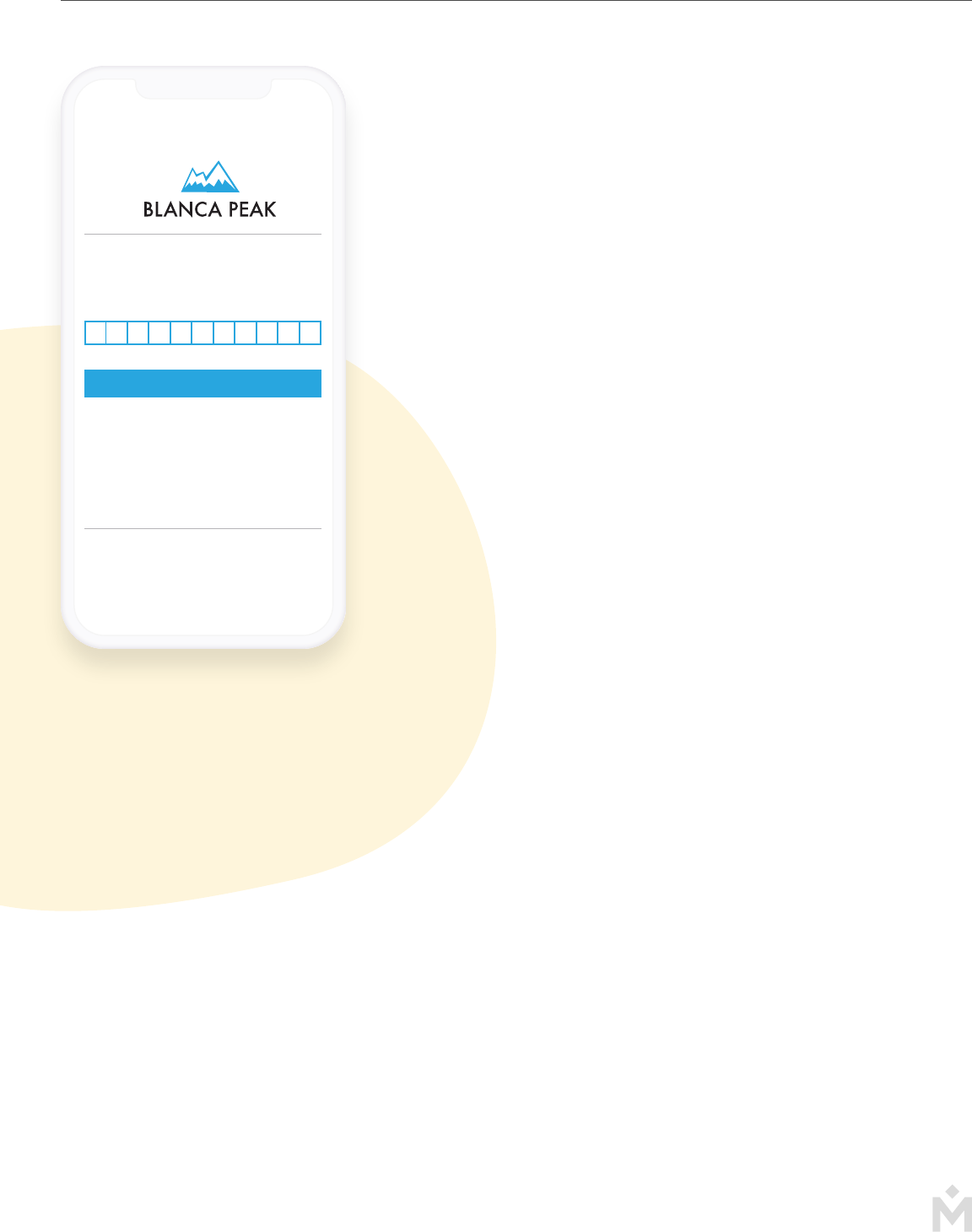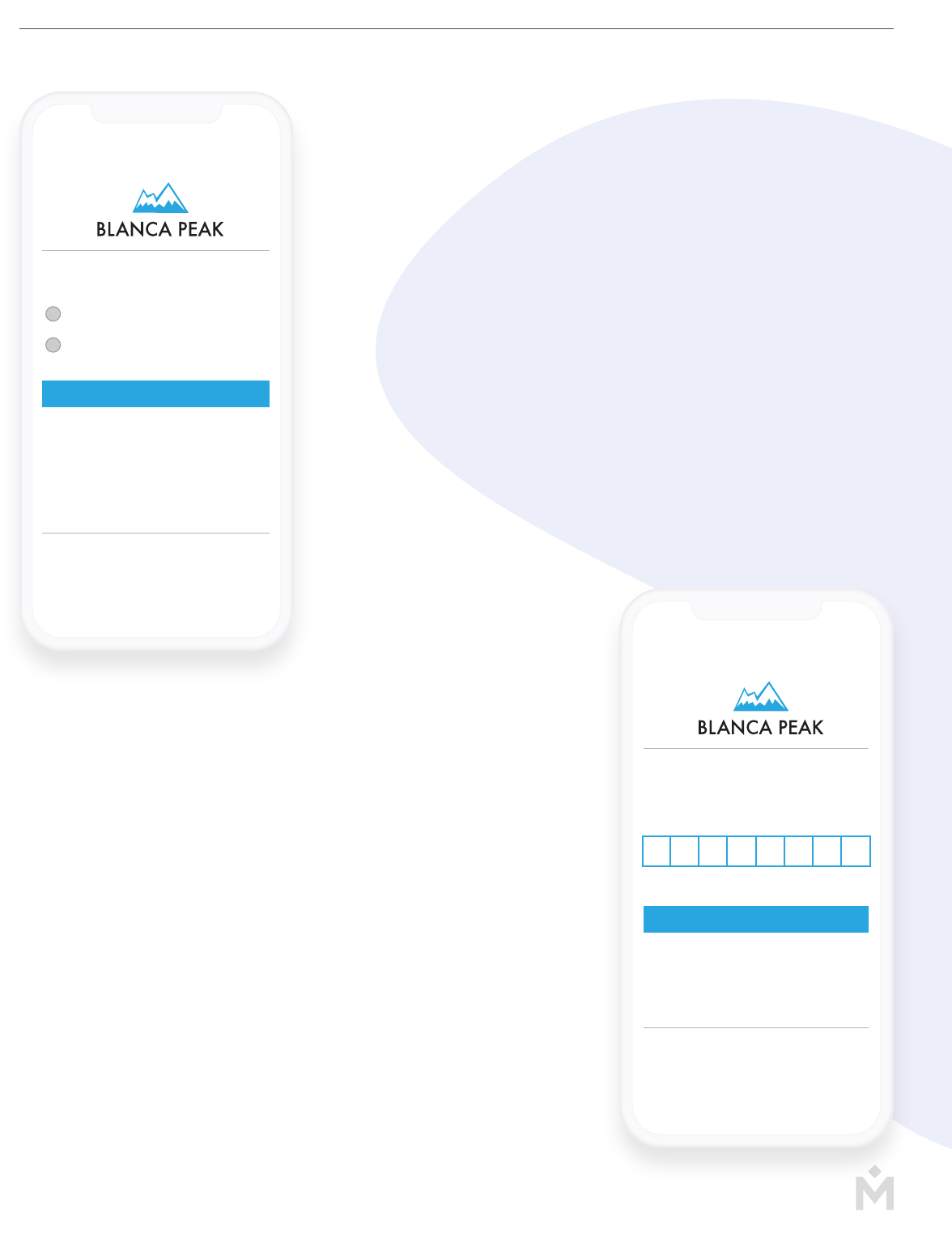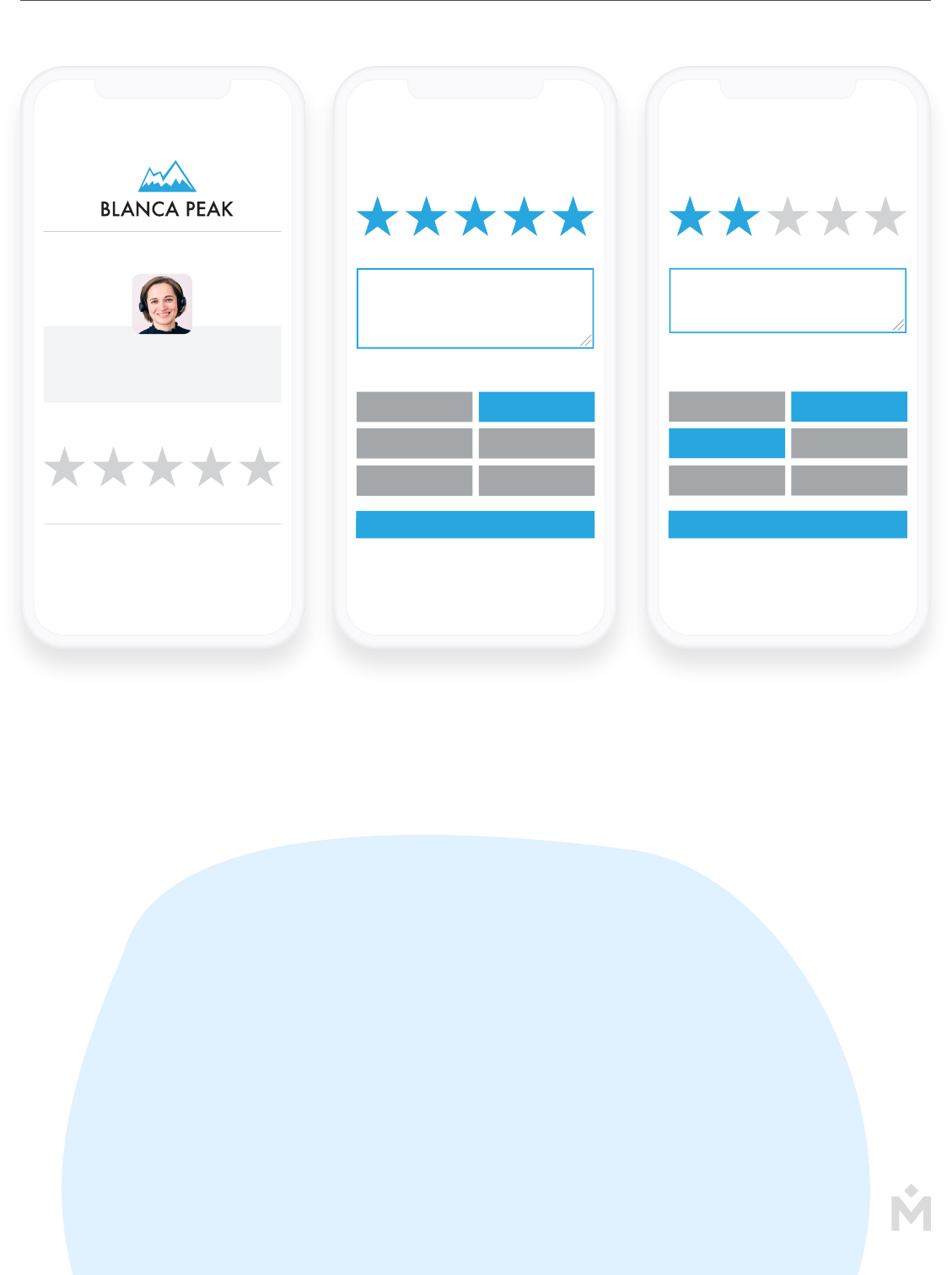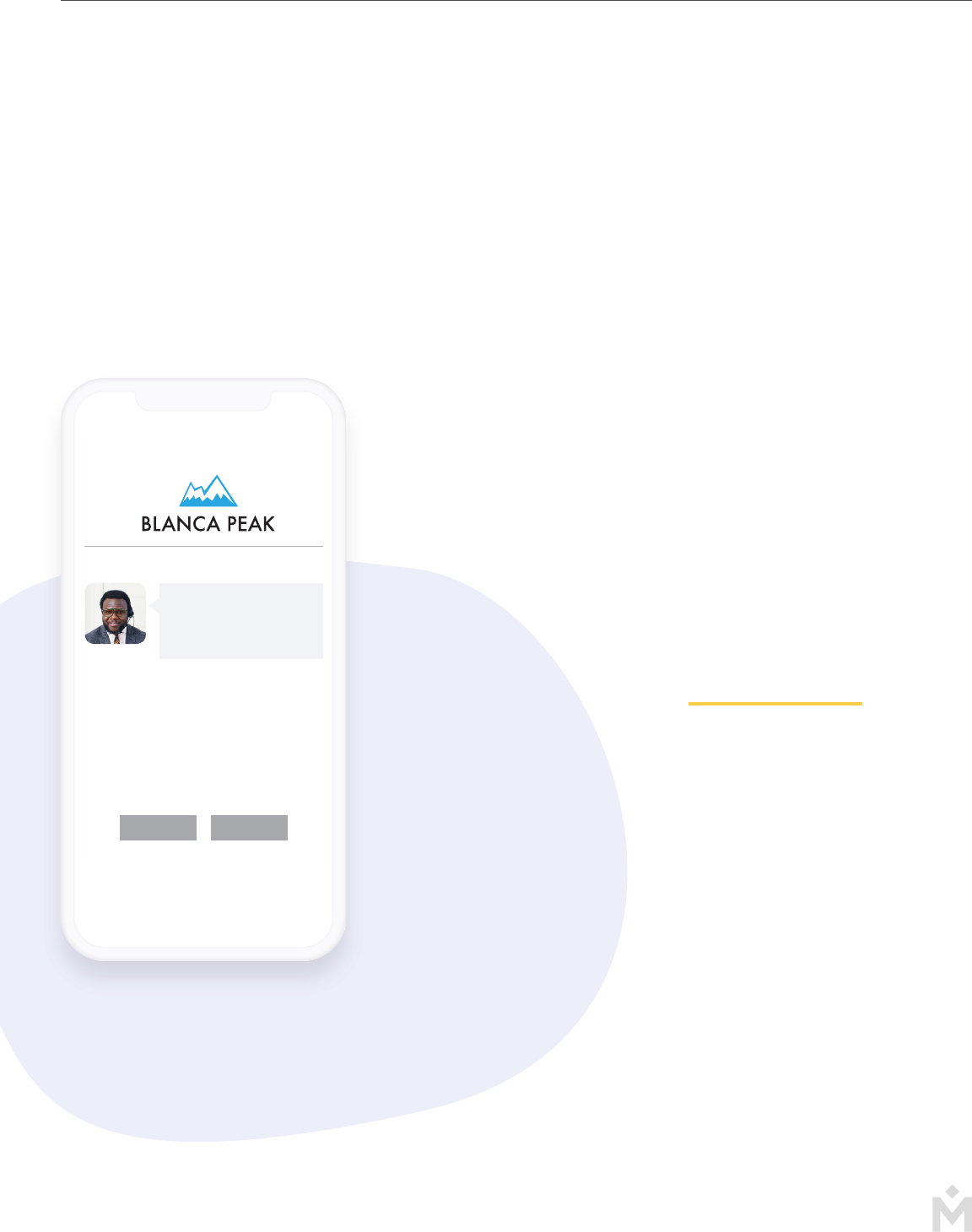
2
TABLE OF CONTENTS
1. Introduction
2. Terms Defined
3. Net Promoter Score (NPS)
4. Customer Satisfaction (CSAT)
5. Customer Eort Score (CES)
6. First Contact Resolution (FCR)
7. What Metrics to Use, and When
A. To Measure Customer Advocacy and Brand Sentiment
B. To Measure Service Team Eectiveness
C. To Measure Agent Performance
8. How to Improve Your Customer Satisfaction Metrics
9. Why Measuring Customer Satisfaction Matters

3
Every Customer Service organization has metrics
that matter to them. Your agents are responsible
for a ton of data around customer interactions, like
Average Handle Time or Average Reply Time,
the percentage of customer issues that are fully
resolved, and — of course — how satisfied your
customers are.
But when it comes to customer satisfaction, where do you start?
There are multiple ways to measure customer satisfaction, which can make it diicult to know
what metrics are going to be the most valuable to your individual agents, your team, and your
company at large.
With so many dierent ways to measure customer satisfaction, it’s crucial that you pay
attention to the right metrics to keep your team focused.
In this guide, we’re breaking down each customer satisfaction measurement in-depth, with
details on how to calculate each and insight into when it makes the most sense to use one
metric over another.
Already tracking specific metrics for your team, but not sure how to make the most of your
data? We’ll also be giving you actionable ways to take the metrics that matter most to your
team, apply your findings to your team and internal processes, and improve each metric to drive
up your overall customer satisfaction.
Ready to build a data-driven customer service organization?
Let’s get started...
Introduction

4
Terms Defined
First things first: before you can understand what role each metric
plays in your business, you need to understand what each metric is,
and how it’s measured.
Some of these metrics may be more familiar to you than others - like the
tried and true Net Promoter Score - but each one plays a valuable role in
understanding the impact of an organization’s Support or Service team.
Net Promoter Score (NPS)
Let’s start o with one of the most common measurements for customer satisfaction: Net
Promoter Score, or NPS.
For many, the NPS definition that comes to mind most often is a number between 0 and 100
that reflects how likely people are to recommend the brand to others. In most cases, a simple
(often single-question) survey is sent to randomly selected customers, and the Net Promoter
Score is calculated based on the results.
Any votes between 0-6 are considered “detractors,” and mean you’re in trouble; 7-8 means your
customers are satisfied, but not in a way that moves the needle, and are deemed “neutral”; votes
of 9-10 mean that your brand is crushing it, and these customers have become “promoters.”
Many brands use their NPS score as the end-all, be-all of customer satisfaction metrics;
the higher the score, the happier your customers are. The more customers you can deem
promoters of your brand, the better o you are.
But did you know that NPS comes in three dierent varieties? Here’s how they compare.
1. The competitive benchmark NPS score shows how companies stack up against direct
and indirect competitors in a variety of respects. This score helps clarify market threats and
opportunities, and it helps C-level executives set strategic priorities.
2. The relationship NPS score is NPS in the classic sense: how likely existing customers are
to refer the brand to others. This score drives brands’ eorts to improve the customer
experience.
3. The experience NPS score reveals the strength of customers’ loyalty following specific
brand interactions. Because brands know the “why” behind this score, it’s the most
actionable of them all.
In the world of Customer Service, the experience NPS is the type that will resonate the most.

5
After each interaction with an agent, either via email, phone, or chat, you can send a follow-up
survey to your customers asking them to rate their satisfaction with their experience on a scale of
0-10. Based on their results, you can utilize this data to improve your agent eectiveness, hone in
on specific areas of coaching, and drive improvements across your front-line team.
Customer Satisfaction (CSAT)
This measurement is, of course, the most obvious for measuring customer satisfaction - after all,
it’s right there in the name! But what is a CSAT score, how is it measured, and how do you use it?
CSAT is a measure of customer sentiment used to help organizations understand how customers
are responding to their products and services. After a transaction or interaction, customers are
asked to answer a question rating their satisfaction level on a standard scale, typically ranging
from 1 (very unsatisfied) to 5 (very satisfied).
By taking this numeric scale and dividing composite answers by 100%, you can get your CSAT
score; the higher the percentage, the more satisfied your customers are.
As a contact center leader or customer success team manager, this measurement can help you
track service performance over time and identify areas for improvement.
There are two types of CSAT you can measure in your organization:
1. Organization-level CSAT focused on your company, brand, and overall level of
service
the customer received.
2. Agent-level CSAT focused specifically on how satisfied a customer is with the
particular agent who handled their issue.
Many CS organizations utilize CSAT as their main measurement for understanding how their
customers feel about their brand and the service they were provided. But with support teams,
you have the unique opportunity to not only gain insight on a customer’s overall satisfaction, but
on their satisfaction with the individual agent who helped resolve their issue. But we’ll come back
to that.
Customer Eort Score (CES)
As its name implies, Customer Eort Score measures how much eort the customer had to
expend in order to resolve an issue. After a support interaction, the customer is asked to rate how
easy it was to resolve their issue, typically on a scale of 1-7.
To calculate CES, simply add the total number of respondents who agree that the interaction was
easy (those who give a 5 or above) and divide that by the total number of customers surveyed.
Why 5 or above?
Similar to the NPS detractor/neutral/promoter breakdown, CES frames any rating of 5 or above
as equally positive reviews. Meaning, a 5 and an 8 have roughly the same amount of positive

6
sentiment about your brand. Anyone who selects a number lower than 5, deemed either neutral
or a detractor, is a bigger opportunity for your team to follow up with and turn into promoters
down the line.
This metric is important for understanding customer satisfaction because it directly ties back to
the overall eectiveness of your support team, and a high level of eort can mean that customers
are dissatisfied with your services.
When a customer feels like it is on them to resolve their own issues, even after reaching out to
your team for help, it hurts the likelihood of them remaining a customer or re-purchasing
products from your brand in the future.
First Contact Resolution (FCR)
Now, this one might give you pause. Why is First Contact Resolution Rate important as a
measure of customer satisfaction? Well, think about it like this.
Think back to the last time you contacted a brand’s customer service department and the
phone call, chat, or email exchange ended before your issue was resolved. What were you left
to do? Contact the same brand channel again, or through multiple channels? Vent on social
media? Throw up your hands and switch brands for good?
This situation was no doubt frustrating for you, frustrating for the agent(s) you encountered
who wasn’t able to help you, and costly for the brand. This is where FCR comes in.
Having a low FCR rate is detrimental for two main reasons.
First, the more times a customer has to contact your team, the more money you spend on that
same customer’s issue over and over again. When agents are equipped to close out issues in
just one call, email, or chat interaction, their time is freed up to help more customers.
Second, each additional interaction your customer needs to initiate or follow up on decreases
their likelihood of recommending your brand to others (impacting your NPS score), increases
the amount of eort they had to expend on the issue (hurting your CES benchmarks), and
overall impacts their satisfaction with your brand (lowering your CSAT).
The more interaction touchpoints, the less likely they are to remain a customer.
When your customer service team is hyper-focused on resolving customer issues within the
first contact the customer makes, you help ensure that the customer’s needs are being met,
your team is equipped with the tools to tackle any challenge eiciently and eectively, and can
better pinpoint areas of improvement for coaching agents who struggle with a low FCR rate.

7
What Metrics to Use, and When
Now that we’ve got the basics down of each main customer
satisfaction metric, let’s move on to another critical part of the
measurement process: using the right metrics at the right time.
While CSAT can be seen as a catch-all metric, it may not fit in every
specific use-case for measuring how your customers feel about your
brand after interacting with your support team. At the same time,
NPS may not be the best measurement for understanding agent-level
metrics, but is much better suited to gauge overall brand sentiment.
Below, we’ll walk through a few examples of measuring dierent
aspects of customer satisfaction, and which metrics make the most
sense in each scenario.
To Measure Customer Advocacy and Brand Sentiment
How much does it cost your business to find new customers?
Maybe your Marketing department is focused on paid advertising, and the main way you drive
demand for your business is through paid media. Maybe you invest less in paid, but more in an
outbound Sales team who proactively find and reach out to customers who could be a good
fit for your brand. Or maybe your business is big enough that you rely entirely on customers
finding you organically, and your cost per customer acquisition is relatively low.
Whatever the case may be, it’s inherently more expensive for brands to find new customers
than it is for those brands to retain their current customers
1
. According to research, brands
spend up to 5x more money finding new customers than they would spend on nurturing their
relationships with current customers. That’s a lot of money that your business could be saving,
or investing in other parts of the organization, like your Engineering or Customer Success
teams.
Plus, happy customers who stay with your brand can become your biggest (and cheapest)
avenue for acquiring new customers. Word-of-mouth marketing is focused on turning
customers into promoters who will share their positive experiences with your brand and
encourage their networks of peers to buy your products or services.
1. Source: https://www.forbes.com/sites/jiawertz/2018/09/12/dont-spend-5-times-more-attracting-new-customers-
nurture-the-existing-ones

8
But how do you understand how your customers feel about
your brand, and which ones you can consider advocates?
The best place to start for measuring customer advocacy is
with a good old fashioned NPS. An NPS allows you to keep
a pulse on how your customers feel about your brand with a
straightforward question: On a scale of 1-10, how likely are you
to recommend our brand?
Based on the promoter, neutral, and detractor scale we
mentioned earlier, you can gauge how many of your customers
could be considered “advocates” of your brand and focus your
eorts on improving low scores.
If a customer consistently gives you a low NPS rating, you can
share that information with their Account Manager or your
CX team, who then have the opportunity to follow up with
the customer directly to learn more about why they chose a
specific rating, and what your brand can do to make that score
go up the next time they’re surveyed.
How often you measure NPS is another important factor to
consider. Some companies measure NPS once a year, while
others measure it every quarter.
Find the cadence that works best for your business and
enables you to accurately (and meaningfully) measure any
changes to your NPS score.
How likely are you to recommend
Blanca Peak to a friend?
Powered by
Submit
102345678910
To Measure Service Team Eectiveness
In the world of customer service, it’s important that front-line agents not only be empathetic
and helpful when handling customer concerns, but that they make sure they’re managing every
interaction as eectively as possible.
But what does eectiveness actually mean, and how do you measure it?
Customer satisfaction metrics are a great place to start. By understanding how your customers
feel after interacting with your agents, including whether or not your team was able to help
resolve their issue, you can get a deeper understanding of how eective your agents are. This
will not only help you empower agents who excel, but will give you the opportunity to dig in with
agents who may be having issues and coach them through diicult situations.
There are two main metrics you can use to understand the eectiveness of your agents: First
Contact Resolution, and Customer Eort Score.

9
First Contact Resolution is relatively straightforward.
The main goal here is just to understand if your team was
actually able to solve the issue your customer was facing.
When your agent closes the support ticket, having a post-
interaction question that allows them to select “Yes” or “No”
keeps the process simple.
When it comes to FCR, the main concern is understanding at
what rate your team is resolving customer issues in just one
interaction, regardless of the channel the customer used to
reach out to your team.
This is an important benchmark for measuring how eective
your agents are at managing customer inquiries, in getting
customers the right answers quickly, and in representing
themselves as experts on your brand and products or services.
If someone responds “Yes,” that’s great! Your agents are
eectively helping customers resolve their issues in just one
interaction.
But what if someone says
“No”? Keep reading for tips
on how to improve your
customer satisfaction metrics
- no spoilers!
Now, let’s dive into Customer Eort Score.
While CES is not feedback directly tied back to your individual
agents, you can utilize customer responses to understand which
agents are giving customer inquiries their full attention and
eort, thus reducing the work for the customer in getting their
issue resolved.
Sometimes your front-line agents can make adjustments for
your customers and take the onus completely o them. But
depending on your industry, that might not always be the
case. Other times, customers are reaching out to your team
for an expert opinion on how to do something, or for further
information about a help article they read but found unclear.
Whatever the case may be, it’s up to your agents to ensure that
the customer has the most seamless experience possible.
Did we solve your problem?
Submit
Powered by
Yes
No
Did we solve your problem?
Submit
Powered by
Yes
No
How much do you agree or disagree
with the following statement: Blanca Peak
made it easy for me to handle my issue.
Powered by
Submit
Strongly Disagree Strongly Agree
102
34567

10
When you measure CES, you get a straightforward answer from your customers about whether or
not they were able to provide that experience.
If scores are low, you can replicate a similar follow-up to your First Call Resolution strategy:
garner additional context from the customer about how your team missed the mark, and reach
out to them after the interaction in order to make it right.
By putting these measurements and best practices into place, you not only set your team up to
better understand customer satisfaction, but give them an actionable way to take that insight,
pick out the low scores, and work to turn those negative experiences into positives.
To Measure Agent Performance
Now, I know what you might be thinking: isn’t eectiveness the same thing as performance?
Not quite.
While looking at agent eectiveness uses measurement metrics that focus on the customer in
relation to the brand, looking into agent performance means using metrics that shift that focus
away from the brand and directly to the agent themselves.
Collecting agent-level feedback is a great way to accomplish multiple goals at the same time.
On one hand, you gain more information about your customer’s experience with your brand right
down to the individual at your company that they spoke to.
On the other, you unlock a treasure trove of first-hand customer feedback that you can use to
coach, motivate, and recognize your agents based on their performance.
While it’s always valuable to understand customer satisfaction with your company, capturing
agent-level CSAT is a game changer for service leaders.
Agent CSAT scores can help team leaders in a number of ways.
First, they give you the opportunity to identify coaching opportunities to improve agent
performance. In the example below, after a poor rating, the customer marked professionalism
and eort as areas of improvement. Without that feedback, you may never have realized your
agent was struggling in those areas.

11
Second, they give agents visibility into their individual performance to encourage self-
correcting behavior. When agents can see real-time feedback after getting o of a customer
call or ending a chat conversation, the conversation is still fresh in their minds. If they receive
positive feedback, it serves as a morale booster before their next ticket. If they receive
negative feedback, they can reflect on how they handled the situation, and use that feedback
to guide self-correction in future similar situations.
Finally, and for some, most importantly, they provide a simple metric to share with executives.
While you may be in the weeds of NPS, CES, and FCR and can understand how each one plays
its own role and how they work together to tell a holistic story, your executives likely only care
about one thing: are your customers satisfied with your brand and your service team? With
agent-level scores rolling up into one composite, you can give your C-Suite a birds eye view
into overall team performance (with the option to dive deeper, if they want it).
All of these various use cases work together to not only improve the customer experience, but
also serve to help highlight your team’s impact on the overall success of the business.
Did we solve your problem?
Submit
Powered by
Yes
No
Did we solve your problem?
Submit
Powered by
Yes
No
Did we solve your problem?
Submit
Powered by
Yes
No
EXCELLENTPOOR
Powered by
You recently had a call with:
Overall, how would you rate the call?
Mariana
Customer Service
Enjoys hiking, traveling, Thai food, and watching
entire seasons of TV shows in one sitting.
EXCELLENTPOOR
Overall, how would you rate the call?
Passed the buck / didn't really take ownership
in helping solve the problem.
Sorry to hear about your experience.
How can we improve?
Friendliness Other
Effort Clarity
Knowledge Professionalism
Submit
Powered by
Submit
EXCELLENTPOOR
What did Mariana do particularly well?
Overall, how would you rate the call?
Powered by
Above and Beyond Knowledgeable
Friendly Personable
Efficient Empathetic
Mariana listened, took responsibility and empathized.
Then she worked to solve my problem. Great job!

12
How to Improve Your Customer
Satisfaction Metrics
Improving your customer satisfaction not only means happier
customers, but contributes to brand advocacy and increased
purchases. As a result, improving your CSAT score is an important
initiative for every front-line team.
There are a few key strategies we’ve already touched on, but let’s
dive deeper.
1. Collect Comments and Feedback from Customers
When you send a post-interaction survey to customers, whether you’re collecting NPS
feedback, measuring CES, or gauging your FCR rate, it’s critical that you give your customers a
way to provide real, tangible feedback.
Clicking a numeric button, in truth, doesn’t tell you much.
It’s just as valuable to your team - or even more so - to understand why someone picks “8”
on an NPS survey about whether or not they’d be likely to recommend your brand, as it is to
understand why someone picks a “3.”
The same can be said for CES and FCR. Why did the customer feel they had to exert a lot of
eort even after speaking with your team? What happened that they don’t believe your agent
was able to resolve their issue?
Collecting feedback, both good and bad, is important. It gives your team tangible ways to
improve on their processes, and also gives your customers a way to feel like their voice is being
heard and that it matters.
2. Include a Follow-Up Question
Once you have a system in place for measuring CSAT, follow-up questions are a great way to
bolster your feedback insights and dig into a particular topic.
For example, after a customer submits their response to a post-interaction survey where they
rate the agent they spoke to, you can ask what your agent did particularly well (if they were
scored favorably) or ask what your agent could improve on (if they were scored poorly).

13
Doing so gamifies the feedback, giving you specific insights into what your customers are
looking for, and can help inform how you hire, onboard, and train new agents.
These follow-up questions are especially valuable for organizations looking to better understand
how their front-line team is performing. After all, we’re all probably guilty of arbitrarily picking
a number or a rating just to get it done with, without really thinking about why we’re giving
that rating.
Asking a follow-up question gives your customers the opportunity to take a step back and really
think about their feedback, why they picked the rating they did, and give your team a more
nuanced understanding of where they excelled or where they may have missed the mark.
3. Use Customer Feedback for Agent Coaching
That leads into our next strategy, which is utilizing the customer feedback you collect to guide
how you coach your front-line agents.
Let’s face it: your customer satisfaction scores, no matter how you measure them, are directly
tied to how empowered your agents are in understanding all facets of your business. If they
aren’t given the proper tools or learning opportunities, how can they improve their performance -
and thus, improve how your customers feel after interacting with them?
And as valuable as feedback like NPS score is for your organization as a whole, it’s even more
valuable for your support team.
Team leaders should set up alerts to flag opportunities for improvement and take immediate
action to coach agents on how to better address issues in the future.
If an agent is flagged as lacking clarity when communicating, you can easily tailor your coaching
for that specific skill and ensure that your agent learns from the experience.
With modern customer feedback tools, you can easily set up alerts to flag negative feedback,
leave comments or annotations within a ticket, and deliver in-the-moment coaching throughout
the day. When you let CSAT scores guide your coaching eorts, you’ll never miss another
opportunity for improvement.
Bonus tip: you can set up these same alerts for positive customer feedback. Utilize the
comments of your real customers to motivate your agents to bring their A-game every day and
underscore the value of their contributions to your organization.

14
4. Act on Low Ratings or Negative Feedback Right Away
Let’s take a step back and think about the situations we outlined earlier for when to utilize CES
and FCR as metrics for measuring customer satisfaction.
If you send someone a post-interaction survey asking if you solved their issue or made it easy for
them to resolve, and they say “No” or rate you poorly, what do you do?
Receiving negative feedback is inevitable, but taking that feedback seriously and turning it into a
learning experience is imperative for keeping your CSAT scores high, your agents engaged, and
your customers happy with the services they receive.
First, you can ask follow up questions (see #2 above!) to better
understand what happened that caused them to end the
interaction without having their issue resolved.
Was the agent unable to resolve the issue on their own and
had to escalate it to their manager or another team? Did the
customer feel the agent wasn’t being helpful and decided to
figure it out on their own?
This additional context is crucial in understanding what went
wrong, and how that will reflect on your FCR rate.
Once you have additional context on the situation, you can
utilize tools like Stella Connect’s Service Recovery to follow
up with these customers and make up for the negative
interaction.
When an issue is unresolved or a customer leaves negative
feedback, teams can decide right away if they want to follow
up with the customer directly. If they do, Stella Connect makes
it easy to streamline the process, get the customer experience
back on track, and trigger another follow-up survey after the
recovery call.
By following up with another “Yes” or “No” question, you’ll not
only be able to measure the change in customer sentiment,
but also help reveal the impact of your service recovery
program on your CSAT scores.
Did we solve your problem?
Submit
Powered by
Yes
No
Were we able to make up for
your poor experience?
Carl, Customer Service Manager
Sorry again that you had a poor
experience with our customer
care team. I can imagine that it
may have changed the way you
feel about us.
Yes
No

15
Why Measuring Customer Satisfaction Matters
It goes without saying that customers are invaluable to your business.
They continue to buy your products or services, tell their friends and
family about you to drive more business, and support you online
through social media.
That is, they do all of those things, if (and only if) they’re a
happy customer.
We know your team works extremely hard to keep customers happy. But you can’t know which
customers are happy, and which ones need some extra support and TLC, without first identifying
the satisfaction metrics that are important to your business, and having a system in place for
capturing - and analyzing - customer feedback.
Customer satisfaction is crucial for customer experience teams to understand not only how
they’re doing, but how they can do better.
By utilizing the dierent metrics outlined in this guide, you’ll set your service team up for success,
with a data-backed approach to how they handle each customer interaction and a clear way to
turn customer responses and feedback into insights they can act on.
Being able to measure the impact of their work and prove the ROI of your CX investment to your
organization is just one of the many reasons to invest in tools that make measuring CSAT across
the metrics that matter to you even easier.
Here at Stella Connect, we help organizations take their CSAT scores to the next level.
We oer visual and engaging surveys that unlock more value for brands and drive deeper
customer connections. Our clients see response rates up to 10x higher than industry averages,
which provides a more complete view of whatever metric matters most.
Plus, you’ll get the flexibility to fully customize your post-interaction survey with additional
questions based on your team’s objectives, whether it’s customer eort score, transactional NPS,
or first contact resolution.
Talk about telling a holistic story.
Whether you’re an agent, team lead, or executive, get complete visibility into the metrics that
matter most with Stella Connect.

16
stellaconnect.com
Perform like the top high-growth CX teams. Learn how
Stella Connect can help you provide top quality customer service.
Stella Connect by Medallia is the customer feedback and quality management platform built
specifically for customer experience teams. Our intuitive platform makes it easy to harness agent-
level customer feedback and deliver high impact coaching and QA programs, driving agent
engagement and customer satisfaction.

